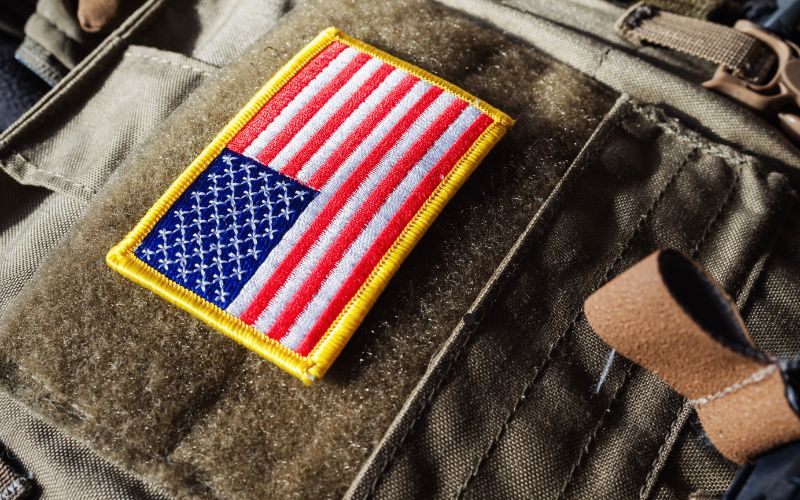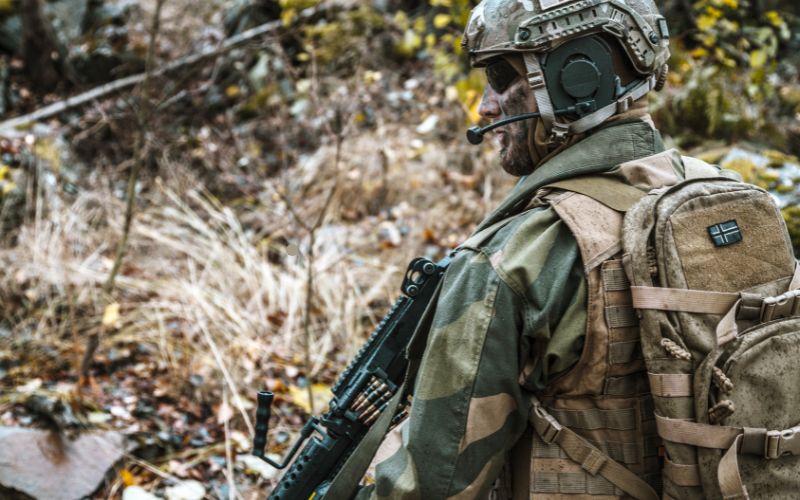Army Plate Carriers: Balancing Comfort, Mobility, and Protection

In the modern battlefield, where rapid maneuverability and robust protection are paramount, the army plate carrier has emerged as an indispensable component of tactical gear. Plate carriers are designed to safeguard soldiers against ballistic threats while ensuring they can move with agility. They are a marvel of engineering that strikes a delicate balance between comfort, mobility, and protection.
Let’s look at the main points that make army plate carriers essential for military personnel and how the advancements in design and functionality have improved their effectiveness.
Evolution Of Plate Carriers
Traditionally, body armor has been an item that was bulky, heavy, and sometimes even restricted the mobility of soldiers experiencing a dynamic combat environment. Year-by-year developments of plate carriers have greatly transformed the initial restrictions to the comfort and flexibility normally compromised upon in the name of protection. Modern plate carriers are the result of design and material innovation, offering a combination of features tailored to the needs of today’s armed forces.
Modern plate carriers are made from advanced materials such as high-strength polyethylene and aramid fibers, which reduce weight without sacrificing ballistic resistance. Most carriers now come with modular attachments, such as MOLLE (Modular Lightweight Load-carrying Equipment) systems, which allow soldiers to customize their setup according to the mission’s requirements. Enhanced padding, adjustable straps, and breathable fabrics ensure better weight distribution and comfort even during extended use.
The journey of plate carriers reflects the broader evolution of military technology. As threats became more sophisticated, so did the need for adaptable and reliable protective gear. Early designs prioritized survivability but often left soldiers encumbered by their weight. Today, the focus is ensuring that soldiers remain nimble, alert, and responsive in any operational environment.
1. Balancing Protection and Mobility Of Army Plate Carrier

At its core, a plate carrier is designed to protect the wearer from ballistic threats. However, too much weight or bulk can prevent a soldier from performing critical tasks. Modern plate carriers balance ballistic protection, lightweight materials, and streamlined designs to ensure soldiers can move, run, and engage in tactical maneuvers without being weighed down.
To achieve this balance, designers pay attention to lightweight yet highly durable ballistic plates. These are typically made from advanced ceramics or composite materials that protect against high-velocity rounds and shrapnel. The carrier is also built from fabrics like 500D or 1000D nylon, which will resist wear and tear but remain light and flexible.
The ergonomic features also contribute to mobility. Adjustable shoulder straps, quick-release buckles, and cummerbund systems enable soldiers to get a fit that does not hinder their movements. Ventilation channels and moisture-wicking fabrics ensure the plate carriers stay comfortable even for extended operations in extreme climates.
2. Comfort As A Key Priority For Army Plate Carrier
Comfort is not a luxury; it is a necessity. A poor plate carrier design leads to fatigue, inefficiency, and long-term injuries. Manufacturers prioritize comfort, allowing soldiers to focus on the mission without being distracted by discomfort.
High-density foam or gel padding decreases pressure points and absorbs shock, especially during extreme physical exertion. The proper design of the carriers facilitates an even distribution of weight over the shoulders and torso rather than putting strain on certain areas. Most carriers have adjustable dimensions, providing a fit tailored to individual soldiers’ needs.
Comfort goes beyond the physical. A comfortable plate carrier keeps the soldier’s mind sharp and morale high. Prolonged discomfort can lead to distraction, frustration, and a lack of focus—factors that can have life-or-death implications in combat situations. Modern plate carriers address these concerns, contributing to overall mission effectiveness.
3. Modularity and Adaptability Of Army Plate Carrier
One of the most important features of modern plate carriers is modularity. Soldiers operate in various environments, from urban combat to rugged terrain, and their equipment must be equally adaptable. A plate carrier’s MOLLE or PALS webbing allows pouches, holsters, and other accessories to be attached, allowing the airline to tailor its setup to specific mission requirements.
Attachments may include ammo pouches, med kits, hydration systems, and communication gear. This adaptability ensures soldiers carry the essentials without compromising mobility or overloading their plate carriers. For example, in urban environments, they may prioritize compact setups with extra ammo pouches, while in remote areas, hydration systems and survival kits are prioritized.
Modern warfare is characterized by the ability to adapt quickly to changing mission requirements. Modular plate carriers empower soldiers to configure their gear on the fly, ensuring they are always prepared for the unexpected. This flexibility enhances operational efficiency and contributes to soldier safety by ensuring that essential tools and resources are always within reach.
4. Durability And Maintenance Of Army Plate Carrier

The carriers are exposed to mud, water, and abrasions, so their design focuses on durability. High-quality carriers are made from strong materials such as 500D or 1000D nylon, which shows minimal wear and tear while remaining light.
Regular cleaning is important for durability since dirt and debris may cause fabric degradation. Following each use, soldiers should check their plate carriers for tears in the fabric, frayed straps, or damaged plates. Properly storing these items in a dry, cool environment can prevent mold and material weakening. Ballistic plates should be periodically inspected for cracks or other forms of wear.
Most manufacturers offer recommendations on increasing the life of a plate carrier in addition to routine maintenance. These include not exposing the gear too much to direct sunlight, not employing harsh chemicals for cleaning, and replacing worn straps or buckles. By following these practices, soldiers can ensure that their gear remains reliable and effective.
Future Trends In The Design Of Plate Carriers
Plate carriers continue to evolve through constant innovation by scientists in the materials science arena and feedback from soldiers. Other future trends of the plate carrier include integration with smart technology like built-in sensors to monitor vital signs or offer situational awareness. Researchers might discover ultra-light and ultra-strong materials, meaning carriers can protect more without adding extra weight.
Future designs of tactical gear may also include materials that change with temperature, providing cooling in hot climates and insulation in cold environments. Plate carriers may be integrated with lightweight exoskeleton systems to reduce the load on soldiers further, enhancing their endurance and strength.
Another promising development is the use of augmented reality (AR) interfaces. If AR displays are integrated into the carrier’s design, soldiers can view maps, enemy positions, or mission updates without leaving their surroundings. These innovations represent the next frontier in tactical gear, transforming plate carriers into multifunctional systems beyond traditional protection.
Choosing The Right Plate Carrier
The right plate carrier for soldiers is an important choice. The following should be considered:
Mission Requirements: Each mission requires different degrees of protection and load-carrying capacity.
Environment: The carrier may need to be more ventilated for hot environments, while cold environments may require additional insulation.
Fit and Adjustability: The better the plate carrier fits, the greater the mobility and comfort.
Budget: Cost should not be an overriding factor when quality and protection are compromised.
Conclusion
Army plate carriers are not only protective gear; they are the trusted companion of a soldier in the field. Modern plate carriers offer the perfect trifecta of comfort, mobility, and protection by combining cutting-edge materials, ergonomic designs, and modular functionality. As warfare demands continue to evolve, so will the innovations that make plate carriers an essential tool for those on the frontlines.
Frequently Asked Questions
What Is the Acronym for Army Plate Carrier?
The acronym for the army plate carrier is SPCS. When choosing Plate Carrier Options, consider Army Regulations, Tactical Gear needs, Body Armor, Military Standards, Personal Preference, Weight Distribution, Material Durability, Combat Readiness, and Plate Carrier Accessories.
What Plate Carrier Do US Special Forces Use?
Do you wonder what plate carrier the US Special Forces employ? They use tactical gear like Crye Precision JPC, LBT 6094, and Ferro Concepts Slickster. It is high-quality military equipment offering custom-fit body armor that is more crucial to the need for combat and secret missions.
Do You Get to Wear Your Plate Carrier in the Army?
Yes, you can wear your custom plate carrier in the Army, but you must make sure it meets regulation compliance. Consider comfort concerns, mobility issues, protection levels, fit restrictions, brand preferences, cost considerations, and necessary size adjustments.

